Do You Need To Fry Flour Tortillas For Enchiladas?
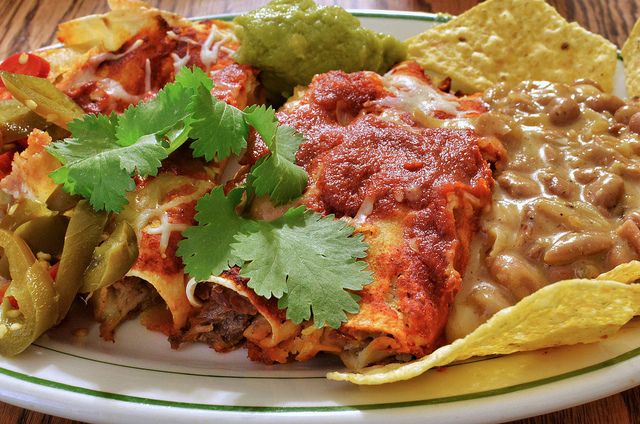
I enjoy Mexican food, but I don’t necessarily require the high-fat content that accompanies it. So, to make enchiladas, do I need to fry the tortillas?
Here’s what I discovered during my research:
You do not have to fry tortillas to make enchiladas. Softening the tortilla on a comal or griddle on the stovetop, steaming or sprinkling with oil, and baking for a few minutes are all alternatives to frying. It’s only a matter of getting them supple enough to roll without breaking.
Make use of corn tortillas to make enchiladas, and unless they are fresh, they are rough. Since the tortillas must be softened before being rolled, they are frequently deep-fried quickly.
So, in this article, we’ll go through all of the alternatives to frying and address all of the often asked questions about them.
How do you heat corn tortillas without breaking them?
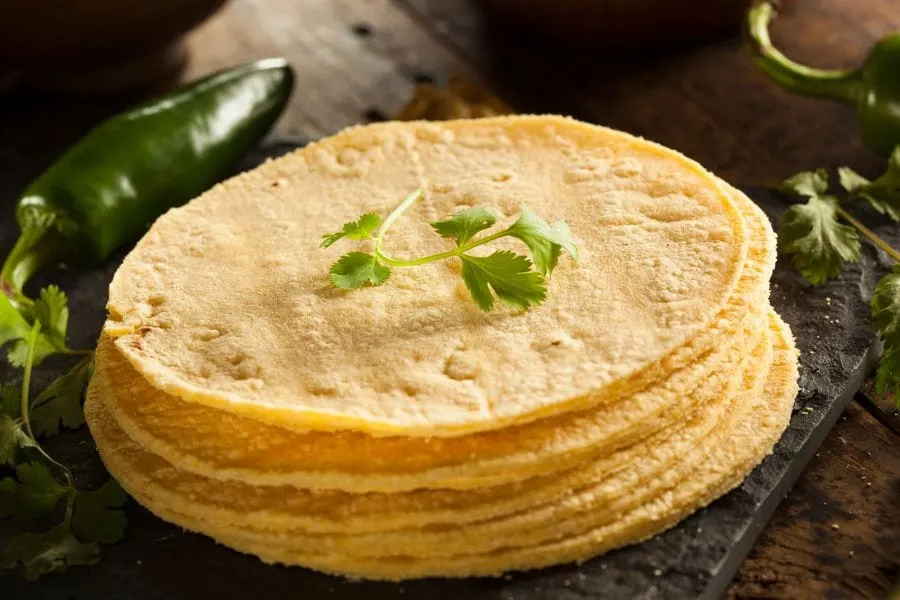
Here are seven ways to soften a corn tortilla, so it doesn’t break or crack when you roll it:
- Warming on a grill, dry skilled, or comal, on a stovetop burner over medium-low heat.
- In a steamer, the production of steam takes place.
- In a microwave oven, steam.
- Preheat the oven to 350°F.
- Spray the tortillas with oil and bake them on a baking sheet in the oven (better than just baking).
- Dip each tortilla in the warm enchilada sauce in a skillet on the stovetop one at a time.
- And, of course, frying in hot oil for a few seconds.
No need to be worried though. Below, I’ll go over those strategies in further depth.
As we previously stated, you would usually cook a corn tortilla in a skillet of heated oil or in a deep fryer. The corn tortillas are immediately fried in Mexico once the other ingredients are ready to roll the enchiladas.
When I say fast, I’m talking about tossing them frequently with tongs for approximately 8-10 seconds, till they crisp up and darken in color.
Remember that we’re attempting to make them simpler to roll, so don’t let them get crunchy like tortilla chips.
Following that, you would customarily dip both sides of the tortillas in a red or green chile sauce heated in a skillet after pulling them out of the hot oil. Coat both sides with tongs, and you’re ready to roll (literally). If you don’t heat them at all, you won’t gain three benefits from frying.
For starters, it keeps the tortilla from breaking apart as it soaks up the red chile sauce, intensifying the flavor. The sugars in the tortilla begin to caramelize, causing the proteins to break down.
Finally, we can roll them without fear of their snapping or splitting down the middle (something all enchilada makers have likely experienced at some point). But don’t be too concerned about the oil. Because the tortillas aren’t exceptionally absorbent, to begin with, they don’t take up much oil.
How can corn tortillas be softened without being fried?
Wrapping a stack of corn tortillas in a moist (but not soaked) paper or cotton towel is the most straightforward technique to soften them without frying them. Then, place the wrapped stack in an unzipped large zip lock bag and microwave for 1 minute.
If you don’t have a microwave or don’t want to use one, there are a few more options.
Making use of a Comal
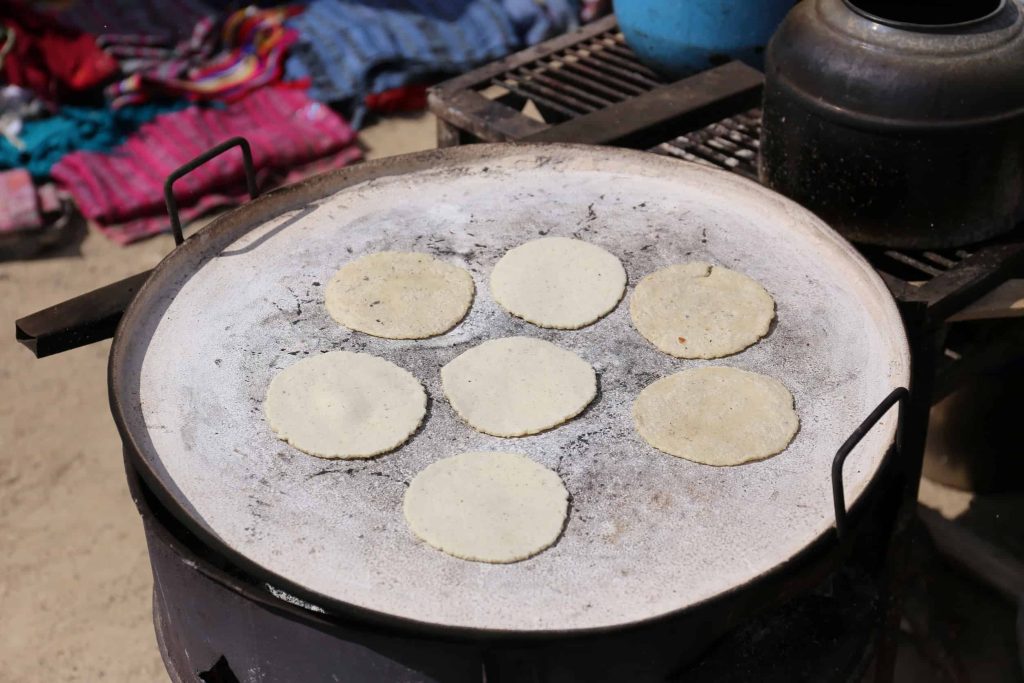
Instead of cooking them in oil, there are a few options. The first option is to warm them on a comal, which I would probably do. In some parts of Mexico, a comal is composed of clay. I used to have a clay one that I adored, but it was broken after being dropped. Unfortunately, clay ones can be difficult to come by.
As a result, the cast iron comal comes to the rescue.
You can find cast iron pans in various cooking stores, Mexican markets, and, of course, on Amazon. They season readily (as do all cast iron pans) and clean up quickly. A comal is just a flat cast-iron disc with a handle.
This is not a skillet because the edges only rise about 1/8 inch, and the surface is entirely flat. They’re usually 8 inches in diameter.
Place the comal on a stovetop burner with a 25 to 50% of maximum heat setting. Place a stack of tortillas on the comal (without the oil) and flip and rotate them occasionally to keep them evenly cooked and avoid burning.
Is there a comal missing?
Wrap a stack in foil, lay it in an oven-safe dish, and then bake at 325° for about 30 minutes.
The tortillas are steamed.
Other than frying or reheating the tortillas, steaming is a standard option. When I say “popular,” I primarily refer to the United States, as I doubt many Mexicans would do something like this.
The major disadvantage, in my opinion, is that steam adds moisture (water) to the tortillas by definition. This causes them to break apart even more because no one wants mushy enchiladas.
If you must steam them, the secret is to steam them for a short period.
As a result, I’d cover a stack of tortillas in a clean towel. If you don’t have a steamer, lightly dampen a towel (before putting the tortillas inside) and microwave for 1 minute. To be clear, while this method can work, it is not my preferred method of enchilada preparation. However, this method is an option instead of cooking the tortillas for enchiladas. This method, rather than steaming, I would prefer to employ.
It truly combines characteristics of both classic frying tortillas for enchiladas and comal heating. Spray a baking sheet with cooking spray, then put the tortillas flat on the sheet. Spray with spray oil, flip and spray the other side, and cook for 5-8 minutes at 325°.
If the tortillas touch or overlap slightly, that’s fine, but don’t stack them.
When they’re done, dip them in the red chile sauce and keep going. Rick Bayless, the renowned Mexican food chef (whom I had the pleasure of meeting and having one of his cookbooks signed), uses a version of this procedure.
He paints one side of each tortilla with oil, arranges them on a baking dish, and bakes them at 350° for 3-4 minutes. Then, one at a time, remove and wrap in a clean cotton towel, filling and rolling each one.
Can you make enchiladas with wheat tortillas instead of corn tortillas?
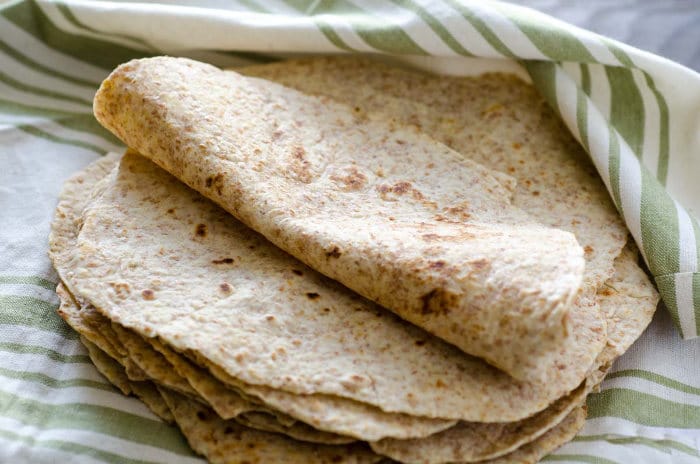
While not traditional, flour tortillas work nicely in place of corn tortillas for enchiladas. On the other hand, you cannot fry flour tortillas like corn tortillas.
The good news is that you won’t have to fry them in boiling oil. (Many thanks for the calories!)
The (potential) bad news is that it’s no longer an enchilada but rather a burrito (usually not cooked) or chimichanga at that moment (more often deep-fried). On the other hand, both of those are more American innovations than authentic Mexican cuisine.
If you use flour tortillas, purists would not call them enchiladas.
That isn’t to say they won’t taste good; it just means they won’t be genuinely Mexican at that time. The gastronomic equivalent of making Indian meals with wheat tortillas instead of naan bread or pesto with a fresh herb rather than basil.
In enchiladas, do flour tortillas get soggy?
If too much sauce is poured on top or if the baking dish in which the rolled enchiladas are placed is cold or at room temperature, flour tortillas can become soggy when used for enchiladas. When using flour tortillas, warm the dish first and use a small amount of sauce.
So, while they may become soggy, it is a simple remedy. Instead of putting the sauce on top, you might lightly brush it on with a basting brush. Preheating the glass baking dish in which the enchiladas are baked will assist the tortillas in crisping up instead of becoming mushy.
What’s the best way to roll corn tortillas without breaking them?
To avoid cracking or shattering, corn tortillas must be softened before being filled and rolled. Dip them in boiling oil, steam them, or cook them on a griddle to soften them. Then, after they’ve softened, quickly dip them in heated enchilada sauce, fill them, and roll them up before they cool down.
Whatever method you choose to soften the tortillas (frying, steaming, or heating), the key is to rapidly dip them in the chile sauce, then fill and roll them. As a result, the most important thing to remember is that time is everything.
As a result, we must ensure preparing all the components for stuffing the enchiladas. Prepare the filling, shredded cheese, and red chile sauce in a skillet over low heat. Then make sure your glass baking dish is ready to go and that you’ve covered the bottom and sides with some red chile sauce.
After that, and only then, are you ready to fry the tortillas and begin assembling your enchiladas?
Is it possible to make enchiladas with uncooked tortillas?
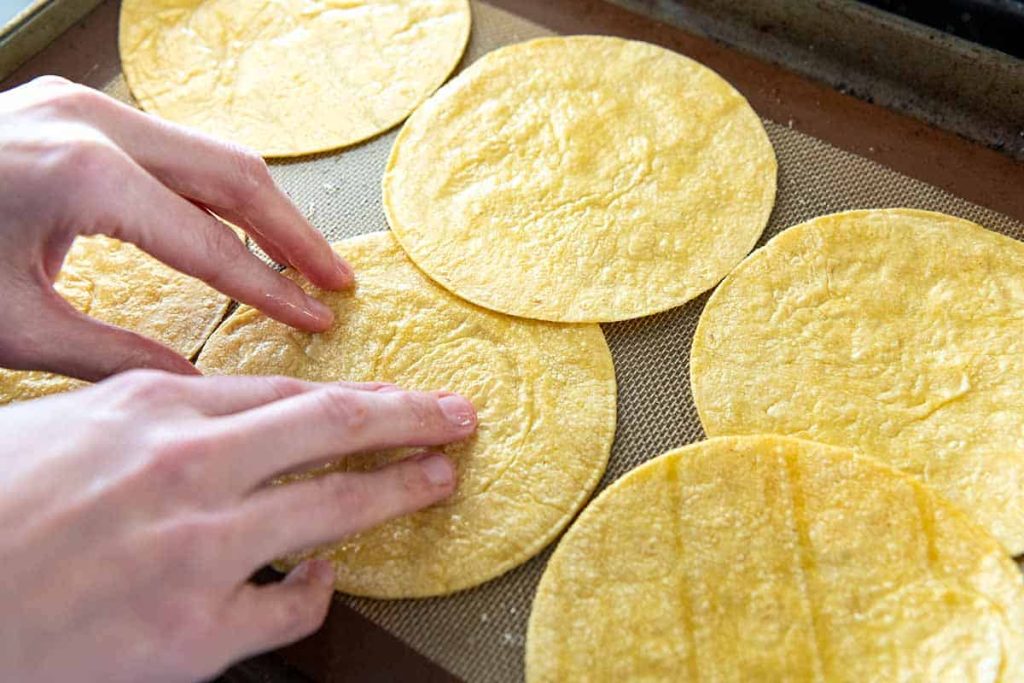
If you’re not making enchiladas using cooked tortillas, only use freshly produced corn tortillas because store-bought corn tortillas will crack and break if you don’t cook them first to soften them. Fresh corn tortillas should be supple enough to roll without softening.
If you’re going to use flour tortillas, don’t worry about cooking them first.
But, as I indicated before, it’s no longer enchiladas in the conventional sense, and it’s more akin to a mini-baked tortilla, which is a uniquely American dish.
It will, however, be delectable!
When making enchiladas, how do you protect tortillas from breaking?
To prevent tortillas from breaking while rolling enchiladas, soften them first by dipping them in hot oil, baking, or steaming them. Then, one at a time, dip the tortillas in warmed enchiladas sauce in a skillet, then fill and roll immediately.
When tortillas aren’t soft enough, they break when you roll for enchiladas.
Corn tortillas from the store are similar to shoe leather. They’re a little harsh, and when you bend them, they fracture. We don’t want our enchiladas to break when filling and rolling them! While there are several methods for softening tortillas before rolling them into enchiladas, it’s critical to choose one of them before assembling the enchiladas.
Finally, some thoughts
We looked into the world of enchiladas in this post, specifically how to get the tortillas supple enough to roll without cracking. The quick answer is that you don’t have to cook the tortillas for enchiladas, although it does give them the best flavor and outcomes.
The tortillas are also less prone to fracture or split when fried. Finally, it aids in the reduction of mushy enchiladas (although that could still happen if you leave them frying too long).
However, there are several alternatives to frying to reduce the calories and fat, and we looked into all of them and the benefits and drawbacks of each.











